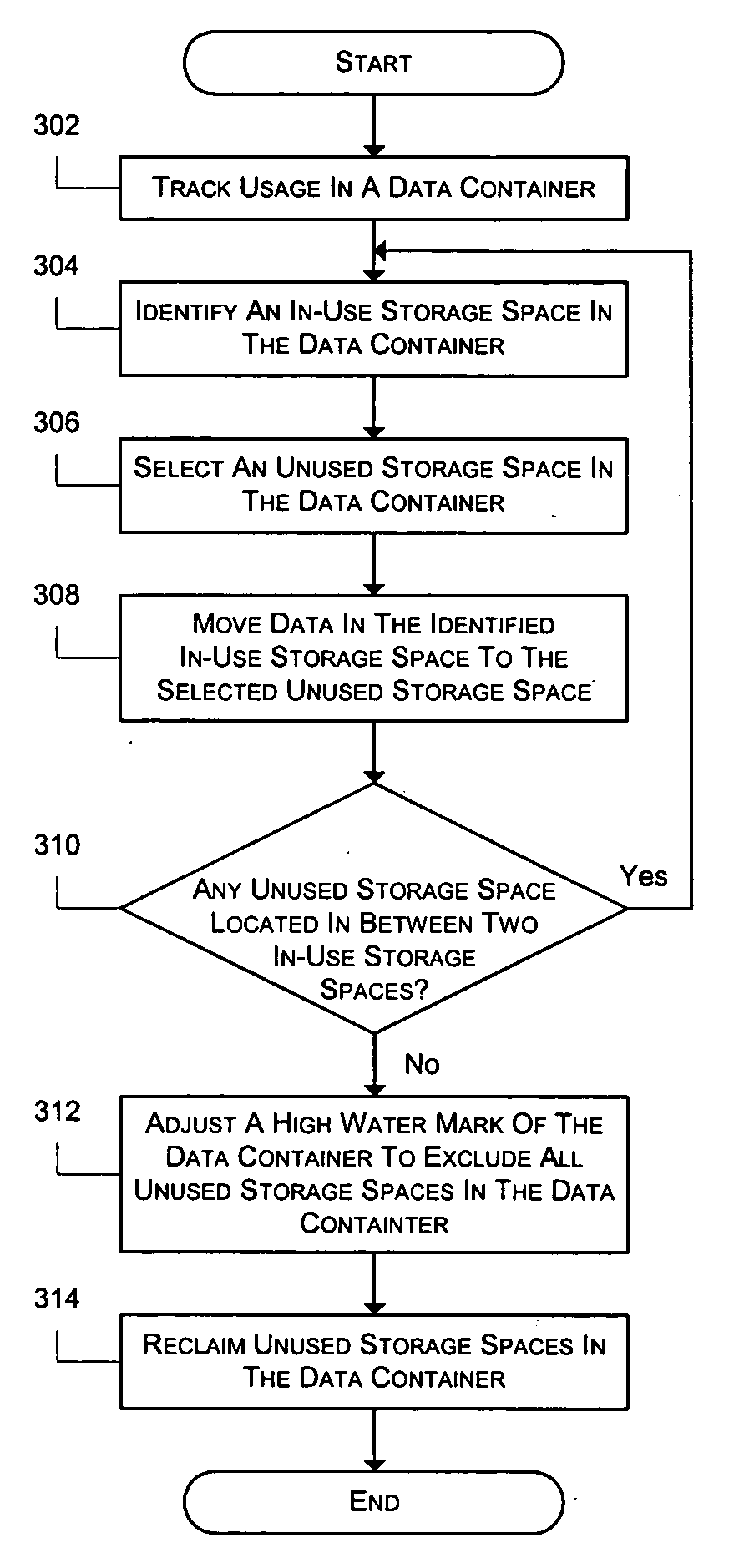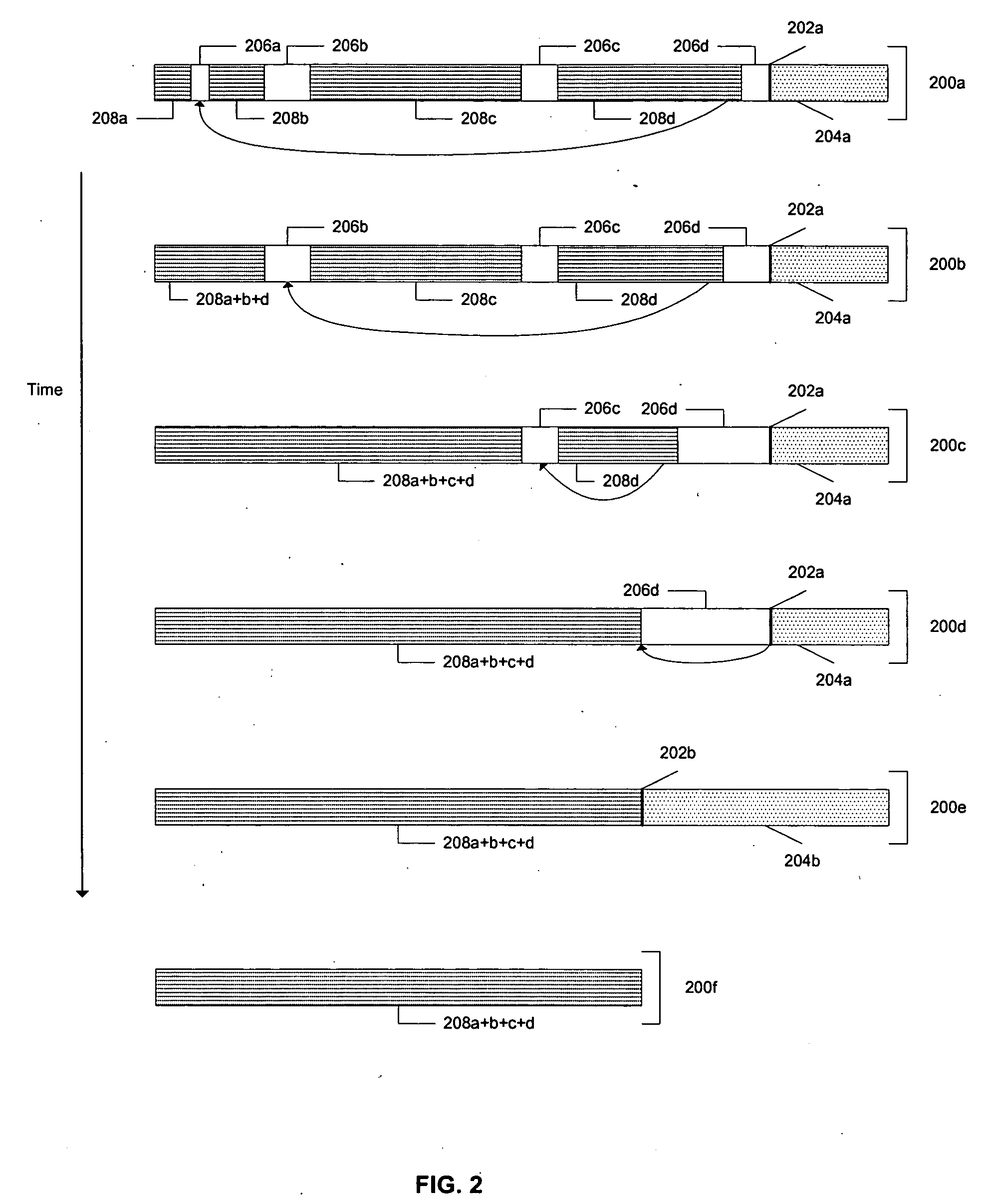Method and system of reclaiming storage space in data storage systems
a data storage system and storage space technology, applied in the field of data storage systems, can solve the problems of affecting scans, affecting scans, and affecting the efficiency of data storage system storage space, and a large amount of storage space allocated for tables will be left unused
- Summary
- Abstract
- Description
- Claims
- Application Information
AI Technical Summary
Benefits of technology
Problems solved by technology
Method used
Image
Examples
Embodiment Construction
[0017] Reclamation of storage space in data storage systems is disclosed. Rather than move data in an existing data container into a new data container in order to reclaim unused storage space below a high water mark of the existing data container, unused storage space in the existing data container is reclaimed by compacting its content, which isolates the unused storage space in the existing data container, and adjusting the high water mark of the existing data container to exclude the emptied storage space. This allows for reclamation of freed storage space without needing to create a new data container, which requires extra storage space. In addition, concurrency of access and data dependencies can be maintained as well.
[0018] Data containers into which data is to be inserted may exist at any level of granularity. For example, a data container may be a table space, a file, a segment, a data block, or a row. A data storage system, at the finest level of granularity, may store da...
PUM
 Login to View More
Login to View More Abstract
Description
Claims
Application Information
 Login to View More
Login to View More - R&D
- Intellectual Property
- Life Sciences
- Materials
- Tech Scout
- Unparalleled Data Quality
- Higher Quality Content
- 60% Fewer Hallucinations
Browse by: Latest US Patents, China's latest patents, Technical Efficacy Thesaurus, Application Domain, Technology Topic, Popular Technical Reports.
© 2025 PatSnap. All rights reserved.Legal|Privacy policy|Modern Slavery Act Transparency Statement|Sitemap|About US| Contact US: help@patsnap.com



